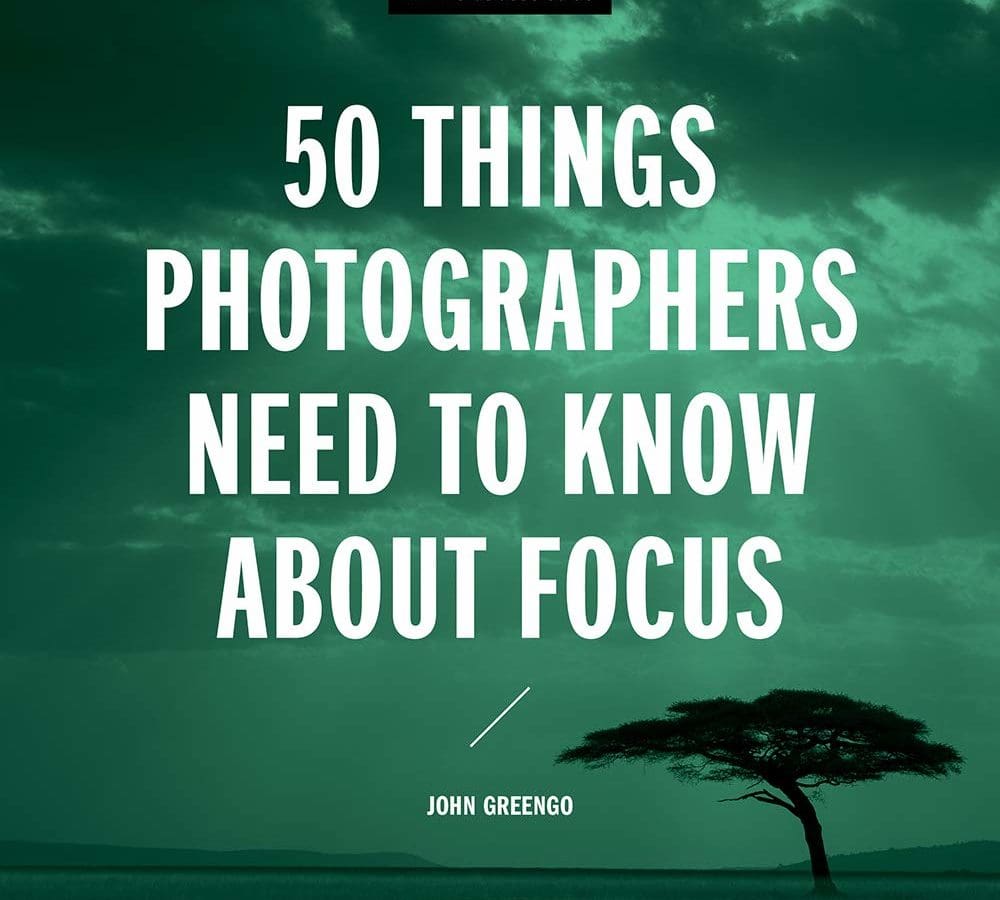A new Book Release
I’m proud to announce that my second photography book 50 Things Photographers Need To Know About Focus is now available. I see it as a companion guide to my first book The Enthusiast’s Guide To Exposure. Between the two they cover the core fundamentals of every photograph. Working with the publisher Rocky Nook, these books are part of their enthusiast guidebook series and should sit comfortably next to each other on the shelf.

Focus seemed to be a sensible topic after exposure, but I wasn’t sure if I could fill a book with quality focus information. Once you explain autofocus and selecting different focus areas and the option of single versus continuous, what else is there? Turns out, a lot.
One of my favorite aspects of any project is organizing the information. I was trying to come up with different topic ideas and categories into which they’d fall. In the beginning, it was total chaos, a true mess. The outline took weeks before it settled into a final form, which of course seems logical and simple with 20/20 vision.
What are the 50 things you need to know?
Well check the book out! It turns out that all my work on my camera classes has made me keenly aware of the idiosyncrasies of all the major brands. Large sections of the book are devoted to Mirrorless vs DSLR focusing, customizing options along with a close look at lens features and options.
One of my favorite sections to research and write was on manual focus techniques. Yes, we all know autofocus is the standard, but there is an art to manually focusing. There are many tricks, both new and old, for perfecting the manual technique. I have used all of the techniques in the manual focus section. It was good to get them laid out in a nice logical manner.
Advanced Techniques
I even got to stretch my legs a bit with the section on advanced focusing techniques. Focus bracketing and tilt-shift lenses are techniques and tools that I use for my own work. They have proven valuable in solving some tricky situations for me. In fact, focus bracketing was my final solution for getting sharp images of cameras for my fast start classes. The cover shot of the class (as pictured below) is shot looking straight into the lens of the camera. The problem is that I wanted the text on the front of the lens in perfect focus, as well as the name and model designation on the body. Stopping the lens down to f/22 just wasn’t doing the job and focus bracketing saved the day. I’m happy to say focus bracketing has spread throughout the industry and can now be found on Olympus, Nikon, Fuji, and Canon cameras.

By the time I was done with the first draft of the book, I had gone well over my word count, which is perfect. After a bit of editing, simplifying, and consolidation it all came together quite nicely. If you are new or newish to photography then this book should set you on a smart course; tackle your everyday, and beyond, focus issues. You may think you know almost everything about the subject. But I believe this book has a bit more to offer; increasing your knowledge and adding to your skillset for making sharper images.
Become part of John’s inner circle
Sign up for the newsletter here – it’s free.
Want to become a better photographer?
Check out John’s selection of photography and camera classes here.



